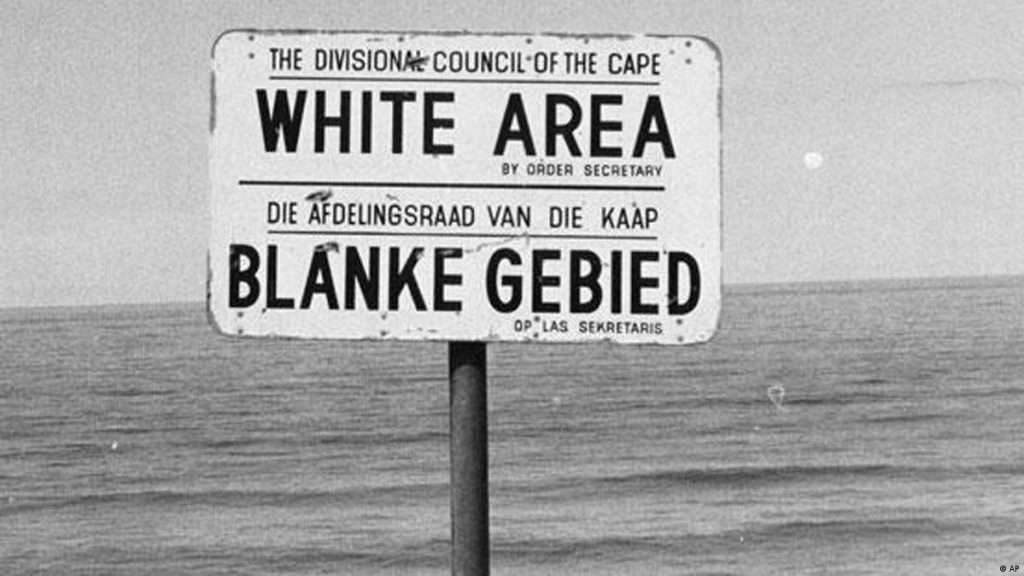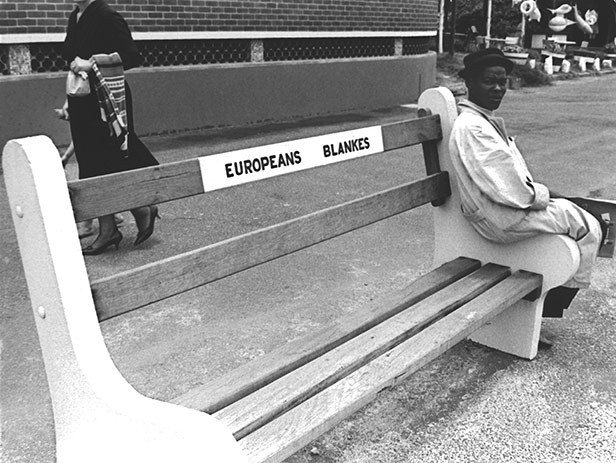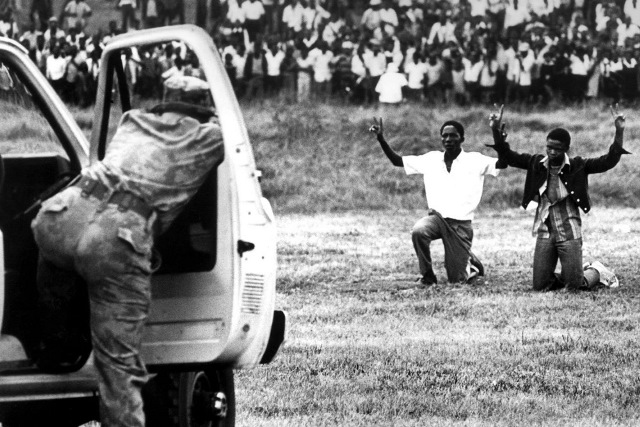Last Updated on December 16, 2022
Black oppression isn’t new in our world today. It’s sad, but Africans have long been oppressed in their own land – not just in western countries. Besides looting and colonizing African nations, blacks were also treated like they were less human than any other race. Apartheid is one of the saddest events in African history. But do you know what really happened during Apartheid in South Africa? It’s possibly worse than your history teacher told you. That’s if there were any history classes on the issue. Here, you’ll find all the answers you need to the events that happened during Apartheid.
South Africa’s apartheid system was one of the most brutal in history. It was characterized by racial segregation, discrimination, and oppression of the black population by the minority white population. The system ended in 1994 with the election of Nelson Mandela as the country’s first black president.
However, the legacies of Apartheid continue to shape South Africa today. Here, we will explore the realities of Apartheid and its legacies.

What Is Apartheid?
Apartheid (1948-1994), or “apartness” in Afrikaans, was a legal framework that supported segregation against South Africans who were not white. The South African National Party came to power in 1948. Its all-white administration immediately started implementing the country’s pre-existing racial segregation laws.
Most South Africans who were not white were required to live away from white people. They also had to use separate public facilities throughout the country’s apartheid era. There was little interaction between the two groups.
Apartheid in South Africa was opposed strongly and consistently both inside and outside the nation. But its laws persisted for more than 50 years. Thankfully, most of the laws that served as the foundation for Apartheid started to be removed during the administration of President F.W. de Klerk in 1991.
The History of Apartheid in South Africa
Before Apartheid even started, racial segregation and white supremacy had already been major tenets of South African policy. Three years after South Africa earned its independence, the contentious 1913 Land Act was passed. This ushered in the era of territorial segregation by requiring Black Africans to live in reserves and outlawing their employment as sharecroppers. The South African National Native Congress was founded by those opposed to the Land Act; it would later change its name to the African National Congress (ANC).
However, Apartheid and the segregation policy of the South African governments that existed before the Afrikaner Nationalist Party came to power in 1948 were similar in many ways. The fundamental distinction is that segregation was made legal under Apartheid. Also, Apartheid brutally and forcibly divided people, and it possessed a terrifying governmental apparatus to punish anybody who disagreed with it. African colonialism was at its peak before World War II began when the West was less critical of racial inequality.

The Second World War (1939-1945) brought racism issues to light. This led to a shift in global attitudes and a rise in calls for decolonization. Strangely, Apartheid, South Africa’s most strict racial policy, was implemented during this time.
From 1949 to 1953, South African legislators (mainly whites) passed numerous repressive laws. This involved the ban on interracial marriage in 1949 and laws separating the public based on race. During this period, they reserved the best public facilities for whites and established a separate, inferior educational system for blacks.
Also, one of the laws, the Group Areas Act, required people of color, Asians, Africans, and persons of mixed ancestry to live in separate communities. It led to occasionally separating families in the process.
Apartheid and Separate Development
When Hendrik Verwoerd took office as prime minister in 1958, he further developed apartheid policies into a framework he called “separate development.” Ten Bantustans, or homelands for the Bantu people, were established by the Promotion of the Bantu Self-Government Act of 1959. By keeping Black South Africans apart, the government was able to assert that there was no Black majority. And this lessened the likelihood that Blacks would band together to form a single nationalist organization.
During this period, every Black South African was given citizenship status within one of the Bantustans, which was meant to grant them full political rights. But in reality, it excluded them from the country’s political structure.
One of the worst effects of Apartheid was the forced removal of Black South Africans from “white” rural areas to the homelands and the subsequent sale of their land at low rates to white farmers. More than 3.5 million people were forcibly taken from their homes between 1961 and 1994 and placed in the Bantustans, where they were thrown into abject poverty and hopelessness.

The Impact of the Apartheid Regime in South Africa
Both black males and females were made to reside in the so-called “black homelands,” where they were allowed to own enterprises. Also, permits were necessary for them to live and work in the designated “white areas.” Furthermore, hospitals, ambulances, transportation, and other public amenities were all segregated, and non-white participation in politics was forbidden.
The impacts, no doubt, were horrifying for South Africa’s non-white populace.
They also made sure that if a family had black and white parents, the children were considered to be “coloured.” Then, between 1961 and 1994, 3.5 million people were forcefully removed from their homes. Non-whites were left in a terrible state of poverty and sorrow when their land was sold for a tiny fraction of its value.

What Happened to Those Who Disobeyed The Apartheid Law?
Those suspected of being in a racially mixed relationship were prosecuted under the Immorality Acts of 1927 and 1950. And South Africans caught breaking apartheid laws could face imprisonment, fines, or the whip. Most “guilty” spouses received prison sentences. Also, a black person who was found without their “dompas,” which is a passport that includes their fingerprints, photo, employment information, and authorization from the government to remain in a specific area of the country, may also be imprisoned. Under these Pass Laws, over 250,000 black South Africans were detained annually.
The Defiance Campaign, the first big non-violent political campaign, was held in 1952. More than 8,000 volunteers willfully disobeyed apartheid rules for four months by forgoing passes, breaking curfews, and utilizing areas of public property that were only meant for white usage.
The United Nations took notice of the campaign, which was led by the African National Congress (ANC) and the South African Indian Congress and resulted in a widespread uprising for liberation within South Africa. Throughout the time frame, there were other instances of resistance, such as protests, strikes, political action, and ultimately armed resistance. A demonstration in the impoverished black community of Sharpeville in 1960 resulted in at least 69 unarmed black people being killed and 180 being injured.
Many anti-apartheid activists were persuaded by the Sharpeville massacre that they could not achieve their goals through non-violent methods. As a result, the PAC and the ANC developed military wings, neither of which ever posed a real military threat to the state.

Nelson Mandela’s Role in Ending Apartheid in South Africa
By 1961, the majority of the rebel leaders had been apprehended, either executed or given lengthy prison sentences. From 1963 to 1990, Nelson Mandela, a founding member of Umkhonto we Sizwe (also known as “Spear of the Nation”), the ANC’s military branch, was imprisoned. Fortunately, his imprisonment helped bring attention to the anti-apartheid movement on a global scale.
Read: Fidel Castro: Is He Truly an African Hero?
On June 10, 1980, Mandela’s supporters released a letter they had secretly smuggled out of prison. It read: “UNITE! MOBILIZE! FIGHT ON! BETWEEN THE ANVIL OF UNITED MASS ACTION AND THE HAMMER OF THE ARMED STRUGGLE WE SHALL CRUSH APARTHEID!”.
When Did the Apartheid Regime End?
The United Nations criticized Apartheid in 1973. But things really heated up in 1976 when police in Soweto started firing tear gas canisters and bullets at schoolchildren. Outrage at the violence led to the introduction of a UN ban on the sale of weapons to South Africa. This was followed in 1985 by economic penalties by the US and the UK.
The Population Registration Act and the majority of the other pieces of legislation that served as the legal foundation for Apartheid were later repealed by De Klerk’s government when he underwent a philosophical change from conservatism to pragmatism. On February 11, 1990, De Klerk set Nelson Mandela free. Four years later, on April 26, 1994, more than 22 million South Africans participated in the nation’s first multiracial parliamentary elections. They chose Nelson Mandela as the ANC’s candidate for president.
Following the passage of a new constitution that granted Black people and other racial groups more rights, Apartheid in South Africa was finally abolished in 1994 when elections produced a coalition government with a majority of people of color.
Before you go…
Hey, thank you for reading this blog to the end. I hope it was helpful. Let me tell you a little bit about Nicholas Idoko Technologies. We help businesses and companies build an online presence by developing web, mobile, desktop, and blockchain applications.
As a company, we work with your budget in developing your ideas and projects beautifully and elegantly as well as participate in the growth of your business. We do a lot of freelance work in various sectors, such as blockchain, booking, e-commerce, education, online games, voting, and payments. Our ability to provide the needed resources to help clients develop their software packages for their targeted audience on schedule is unmatched.
Be sure to contact us if you need our services! We are readily available.











